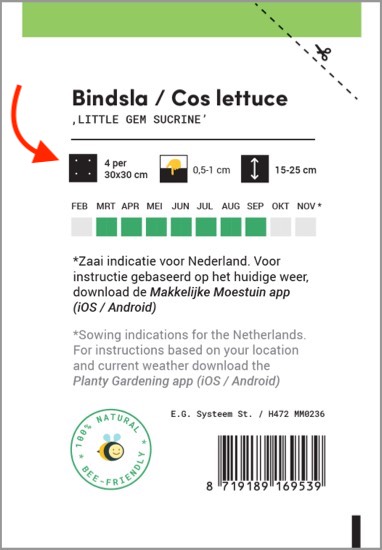Where to put which vegetables and what about crop rotation?
How do you do that? By checking a few things first before you sow:
1. Plant height and location in the garden box

Then sow plants that will stay small in front and sow the tall ones in the back.
This applies to Planty Gardens of all sizes. Here's how it works in a 120x120 cm garden box:

It's even easier if you use the app: it checks each empty patch and tells you which plants will grow best.
2. The time of year

3. Plant families and crop rotation
A lot of experienced gardeners know that if you sow plants from 1 plant family in the same soil, again and again, the plants do worse and worse. There's also a greater risk of pests and disease.
To avoid this in a traditional vegetable garden, growers draw up complex plans. For example, one year they plant lettuce, the next cabbage. The years after that: zucchini, then carrots, then beans, etc., etc. So, the same piece of land has a different type of plant growing in it each year.
You call that crop rotation, but I think it's pretty complicated.
'Crop rotation' in the Planty Garden


For example, let's say you just harvested all your beets (orange). You pick a different color to sow next. Like lettuce, because it's got a green label. Once you've eaten all your lettuce, you can sow something with an orange label again.
Sowing like this prevents a lot of problems and your plants do really well.
At the end of the year - or at the start of the new growing season - you can start again from scratch.
4. How many plants fit in a square patch
You sow them at the right distance from each other so they have enough room to grow. And you don't have to transplant them later.
Vegetables are either small, medium, large, or XL. In 1 square patch, you can fit:


Op naar het volgende onderwerp:
So. If you know what kind of vegetable you want to grow, the next question is how to do it:
Archief verouderde posts
- The Planty Gardening system
- Seeds of the MM Garden
- What is a Planty Garden exactly and how does it work?
- The Planty Gardening system
- Sowing in your Planty Garden
- About where to put which vegetables and crop rotation
- Growing potatoes
- The best materials for your Planty Garden